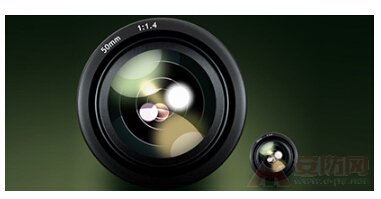With the development of China's intelligent building industry, the status and role of security technology in intelligent buildings is also increasing. As a security technology, closed-circuit surveillance TV (CCTV) system plays an important role in star-rated hotels, foreign-related office buildings, banks, government agencies, etc., including the current smart community also uses CCTV system as security. And an important means of property management. In order to make CCTV technology play a better role in intelligent buildings, in each CCTV monitoring project, how to correctly select camera lenses is very important for economic indicators and technical performance.

Lens classification
According to the type of application lens for civil buildings, it can be roughly divided into:
(1) Wide-angle lens: The angle of view is above 90 degrees, and it is generally used in elevators, halls, and other small viewing distances;
(2) Standard lens: The angle of view is about 30 degrees, which is generally used in places such as walkways and community perimeters;
(3) Telephoto lens: The viewing angle is within 20 degrees, and the focal length ranges from tens of millimeters to hundreds of millimeters for remote monitoring.
(4) Zoom lens: The lens has a variable focal length range, which can be changed from wide angle to telephoto, for areas with large depth of field and wide viewing angle; (5) pinhole lens: used for concealed monitoring.
Determination of lens focal length
When choosing a lens, there are five factors that determine the lens standard:
(1) monitoring the size of the site;
(2) the size of the object;
(3) object distance;
(4) focal length;
(5) CCD target size.
The first 4 points can be measured by the field and calculated to determine the focal length standard of the lens. The calculation method is as follows:
U1/3′′ CCDF4.8×L/W or F3.6×L/H.
U1/2′′ CCDF6.4×L/W or F4.8×L/H
Where W is the width of the subject; H is the height of the subject; L is the distance from the lens to the subject; F is the focal length of the lens.
So why consider the size of the CCD target surface in the selection of the lens?
In order to obtain the same viewing angle from 1/3" and 1/2" CCD cameras, the 1/3" CCD camera lens focal length must be shortened; on the contrary, if the same focal length is used in 1/3" CCD and 1/2" CCD cameras What about the lens? What is the situation? The 1/3" CCD camera angle will be significantly reduced compared to the 1/2" CCD camera, while the 1/3" CCD camera image will be magnified on the monitor by 1/2" CCD image. , produced the effect of using a long focal length lens.
In addition, we must pay attention to the principle when selecting the lens: the CCD of the small-sized target surface can use the lens of the large-size target CCD camera, and vice versa. The reason is: If a 1/2′′ CCD camera uses a 1/3′′ lens, the amount of incoming light will become smaller, the color will be worse, and even the image will be missing; otherwise, the amount of incoming light will become larger, the color will become better, the image will be The effect will definitely get better. Of course, in combination with various factors, it is better for the camera to choose a lens that matches it.
Conveying Hose,Granule Conveying Hose,Pneumatic Conveying Hose,Wire Reinforced Vacuum Hose
Changxing VACUFLEX Hose Technology Co., Ltd. , https://www.vacuflex-cn.com
![<?echo $_SERVER['SERVER_NAME'];?>](/template/twentyseventeen/skin/images/header.jpg)